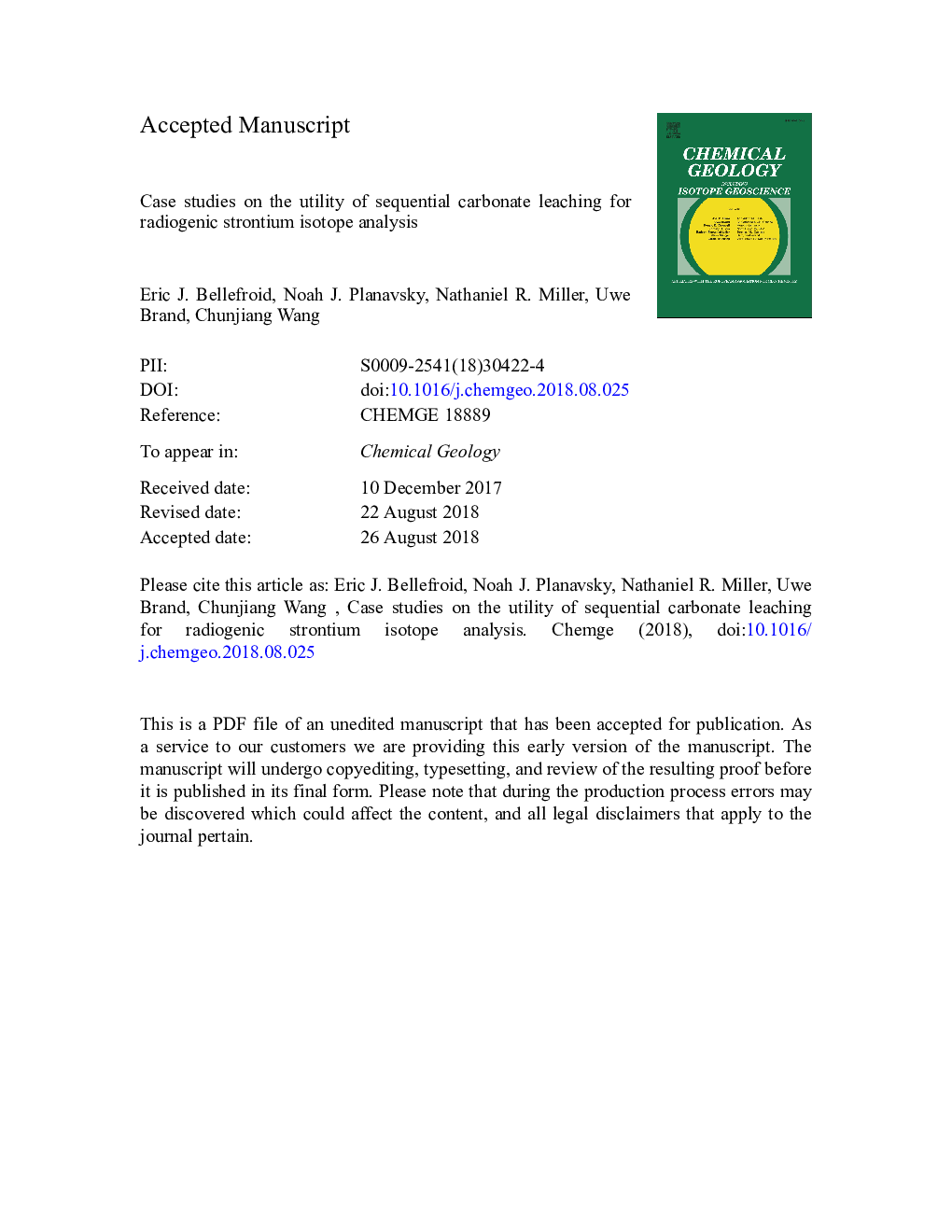| کد مقاله | کد نشریه | سال انتشار | مقاله انگلیسی | نسخه تمام متن |
|---|---|---|---|---|
| 10224331 | 1701095 | 2018 | 39 صفحه PDF | دانلود رایگان |
عنوان انگلیسی مقاله ISI
Case studies on the utility of sequential carbonate leaching for radiogenic strontium isotope analysis
ترجمه فارسی عنوان
مطالعات موردی در مورد کاربرد شستشوی کربنات متوالی برای تجزیه ایزوتوپ استرانتیوم رادیوگرافی
دانلود مقاله + سفارش ترجمه
دانلود مقاله ISI انگلیسی
رایگان برای ایرانیان
کلمات کلیدی
موضوعات مرتبط
مهندسی و علوم پایه
علوم زمین و سیارات
ژئوشیمی و پترولوژی
چکیده انگلیسی
Radiogenic strontium isotopes (87Sr/86Sr) have been extensively used as a tool to explore a diversity of Earth system problems, including long-term global weathering rates and global sequence correlation. Strontium isotopes are measured on a range of geological materials (e.g., calcite fossils, barites, limestone micrites), but whole-rock limestones are by far the most abundant of these materials within the geological record for paleo-seawater 87Sr/86Sr work. Whole-rock limestones, however, have a poor track record of recording primary seawater 87Sr/86Sr values. Alteration of the limestone during diagenesis and contamination from detrital aluminosilicate phases during carbonate extraction have been consistent problems. Various preparation and quality control methods have been applied to whole-rock 87Sr/86Sr work, yet there remains no consistent framework used to separate and identify both contamination and alteration simultaneously. The lack of consistent and systematic methods has made it difficult to gauge the accuracy and fidelity of much of the previously generated whole rock limestones 87Sr/86Sr data, especially for Precambrian sequences. Building on previous work, we explore a sequential leaching method designed to systematically isolate least-altered carbonate phases from detrital aluminosilicate Sr contamination and present several case studies that demonstrate the advantages of this approach. In the first case study, we use the Mid-Carboniferous Bird Spring Formation to empirically validate the accuracy of this sequential leaching method. Comparing least-altered sequentially leached whole-rock 87Sr/86Sr values with well-preserved calcite brachiopod 87Sr/86Sr values from the same section, we find near identical values. Following this first case, we studied the Neoproterozoic Dhaiqa Formation and the mid-Proterozoic Jixian Group and Muskwa Assemblage to outline a framework for identifying least-altered leachate fractions in Proterozoic carbonate samples. As a whole, we find that with this method it is possible to better identify whole-rock samples primary or least-altered carbonate fractions, and better account for alteration, providing a means to back-calculate a samples primary and least-altered marine 87Sr/86Sr value.
ناشر
Database: Elsevier - ScienceDirect (ساینس دایرکت)
Journal: Chemical Geology - Volume 497, 10 October 2018, Pages 88-99
Journal: Chemical Geology - Volume 497, 10 October 2018, Pages 88-99
نویسندگان
Eric J. Bellefroid, Noah J. Planavsky, Nathaniel R. Miller, Uwe Brand, Chunjiang Wang,
